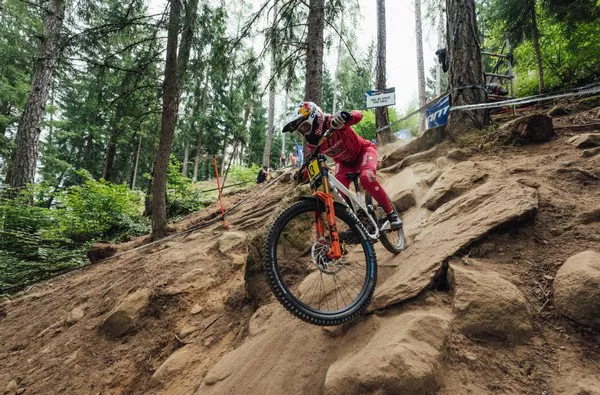Mountain biking is a thrilling outdoor activity that demands not only skill and endurance but also the right equipment. One crucial piece of gear often overlooked by beginners is footwear. The shoes you wear while mountain biking can significantly impact your performance, comfort, and safety on the trail. In this guide, we’ll delve into the key factors to consider when choosing mountain biking shoes to ensure an optimal riding experience.
Understanding Mountain Biking Shoes
Mountain biking shoes are specifically designed to meet the demands of off-road cycling. Unlike regular sneakers or road cycling shoes, mountain biking shoes are engineered to provide a balance of stiffness for efficient power transfer and flexibility for off-bike comfort and walking on rough terrain.
Key Features to Look For
Sole Stiffness: The sole of a mountain biking shoe is one of its most critical components. It should be stiff enough to efficiently transfer power from your legs to the pedals, enhancing your pedaling efficiency. Look for shoes with a stiff sole made from materials like carbon fiber or nylon composite. However, it should also have enough flex to allow comfortable walking when off the bike.
1. Grip and Traction: Given the varied terrain encountered in mountain biking, a shoe with excellent grip and traction is essential. Look for shoes with a lugged outsole pattern that provides traction on dirt, mud, rocks, and other surfaces encountered on the trail. This ensures stability and control, especially when walking over technical sections.
2. Closure System: Mountain biking shoes come with different closure systems, including traditional laces, Velcro straps, BOA dials, or a combination of these. Choose a closure system that allows you to adjust the fit easily and securely. Quick and precise adjustments are crucial for comfort and performance during rides.
3. Protection and Durability: Mountain biking shoes should offer adequate protection for your feet. Look for reinforced toe boxes and heel cups to guard against impacts from rocks and roots. The shoe material should also be durable enough to withstand the rigors of off-road riding.
4. Compatibility with Pedals: Consider the type of pedals you’ll be using. Mountain biking shoes are designed to work with specific pedal systems, including flat pedals or clipless pedals. Ensure compatibility between your shoes and pedals for optimal performance.
Types of Mountain Biking Shoes
There are two primary types of mountain biking shoes: flat pedal shoes and clipless shoes.
1. Flat Pedal Shoes: These shoes are designed to grip flat pedals using a sticky rubber sole. They provide excellent traction and allow riders to easily remove their feet from the pedals when needed, making them popular among downhill and trail riders.
2. Clipless Shoes: Despite the name, clipless shoes actually clip into specially designed pedals using cleats attached to the sole of the shoe. This system offers superior power transfer and control, especially during technical climbs and descents. Clipless shoes are favored by cross-country and endurance riders.
Choosing Between Flat Pedal Shoes and Clipless Shoes
The choice between flat pedal shoes and clipless shoes ultimately depends on your riding style, preference, and skill level.
1. Flat Pedal Shoes: Ideal for beginners and riders who prioritize ease of use, flat pedal shoes provide a more natural foot movement and allow riders to easily put a foot down for balance. They are particularly suitable for technical descents where quick foot adjustments are crucial.
2. Clipless Shoes: More experienced riders often prefer clipless shoes for their efficiency in power transfer and control. They require a learning curve to master the clipping in and out motion but offer enhanced pedaling efficiency, especially during long climbs.
Tips for Trying on Mountain Biking Shoes
When shopping for mountain biking shoes, follow these tips to ensure a proper fit:
1. Try Them On: Visit a local bike shop to try on different brands and models. Fit can vary significantly between brands, so it’s essential to find a shoe that fits snugly but comfortably.
2. Consider Sock Thickness: Wear the socks you typically use for riding when trying on shoes to ensure the right fit.
3. Walk Around: Take a few steps and mimic pedaling movements to assess comfort and flexibility. The shoes should feel secure and supportive without causing discomfort or pressure points.
Maintenance and Care
Proper maintenance of mountain biking shoes can extend their lifespan and ensure consistent performance. Here are some maintenance tips:
1. Clean Regularly: After rides, clean off dirt and mud from your shoes to prevent premature wear and tear.
2. Inspect for Damage: Check for signs of damage or wear, especially on the sole and closure system. Replace worn-out components to maintain optimal performance and safety.
3. Store Properly: Store your shoes in a cool, dry place away from direct sunlight to prevent material degradation.
Conclusion
Selecting the right mountain biking shoes is a crucial step towards enhancing your riding experience. By considering factors such as sole stiffness, grip, closure system, and compatibility with pedals, you can choose shoes that offer the perfect blend of performance and comfort for your riding style. Whether you opt for flat pedal shoes or clipless shoes, prioritize fit and functionality to make the most out of your mountain biking adventures. With the right shoes, you’ll be well-equipped to tackle any trail with confidence and enjoyment.

